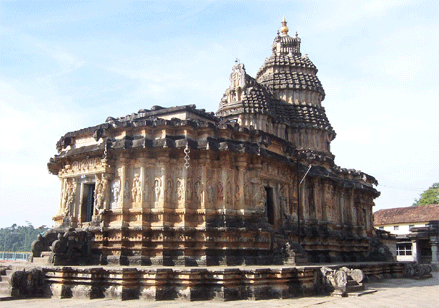History

History
The origin of the matha is described in various traditional sources, including the Sankara Vijaya of Madhava. Sankara is said to have lived here for twelve out of his short life-span of thirty-two years. According to legends, Sankara and his four disciples, accompanied by Bharati, an incarnation of Goddess Sarasvati reached Sringeri on an exceptionally hot noon, and as they proceeded to the river Tunga for their ablutions, they saw a frog struggling in the blazing sun to be delivered of its spawn. A cobra, a natural enemy of frogs, had raised its hood to provide the frog with shelter and protection from the ravages of the tropical sun. Sankara was greatly moved by the sight. If there was paradise on earth, here it was where the lion and the lamb, the tiger and the cow, the cobra and the frog lived in mutual amity and peace. He turned round when, she had already stipulated, Bharati, also known as Sharada, decided to stay for good at Sringeri on the banks of the sacred river Tunga. Vishwarupa, assuming the name of Sureshvaracharya, was installed here as the successor of Sankaracharya before the latter resumed his tour to found his three pithas at Puri, Dwaraka and Badrinath. Thus the matha traces its lineage from Sureshvaracharya.
The Sringeri matha records its tradition from the 8th century onwards. The history of the Sringeri Matha since the period of Sri Bharathi Tirtha (I) and Sri Vidyaranya (14th century) onwards has been extensively documented. Most of the names from the Sringeri lineage up to Vidyaranya are also found in the Sri Guru Charitra, a 15th-century Marathi work by Gangadhara Saraswathi. Sringeri matha sources report that Sankara was born in the fourteenth year of the reign of Vikramaditya. Some believe this Vikramaditya to be the Vikramaditya II of the Western Chalukya Dynasty, which ruled from Badami in Karnataka. Others believe him to the Vikramaditya of the 1st century BC. The matha continues to flourish to this day, and governs many institutions.
